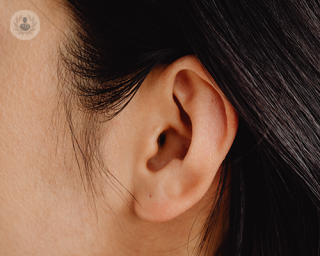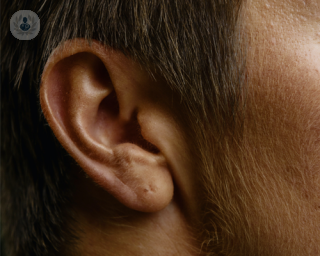Cholesteatoma
Mr Ibrahim Albert Srouji - Otolaryngology / ENT
Created on: 01-19-2016
Updated on: 09-18-2023
Edited by: Karolyn Judge
What is a cholesteatoma?
A cholesteatoma is a rare abnormal growth of skin in the middle ear behind the eardrum that is formed of skin cells. Over time it can grow and destroy middle ear bones or nearby ear structures.

If left untreated, a cholesteatoma can lead to further complications, including ear infections, hearing loss, tinnitus (sounds which come from inside the body rather than external noise), and vertigo (dizziness or the sensation things are spinning). A cholesteatoma can also cause damage to the facial nerve.
Are cholesteatoma serious?
A cholesteatoma can, on very rare occasions, spread to the brain and inner ear, which can lead to meningitis, or a brain abscess. However, it is important to note that this is exceedingly rare.
What are the symptoms of a cholesteatoma?
A cholesteatoma generally only affects one ear, and some common symptoms include:
- Hearing loss (which is usually gradual)
- Loss of balance/dizziness
- A watery discharge from the ear, which can smell bad
- Discomfort in the affected ear
Some of the symptoms are similar to those of an ear infection, so it is best to visit your GP who can check the symptoms and refer to a specialist if necessary.
What causes cholesteatoma?
Congenital cholesteatomas are rare, but they can occur. Cholesteatomas can also form if part of the eardrum collapses, which creates a ‘pocket’ in the ear where dead skin cells collect. This can also occur if the eardrum is damaged in any way, such as during surgery, or after an injury or infection.
How is cholesteatoma treated?
A cholesteatoma generally has to be removed through surgery, which is usually successful. However, in some cases, the cholesteatoma may reappear, meaning further surgery may be needed.
There are rarely complications following cholesteatoma surgery, but your surgeon will explain the risks the procedure carries beforehand.

















